Qasr el-Zayyan
Near the main road, about 75km north of Dush towards Kharga City, are the ruins of Qasr el-Zayyan, one of the largest and most important ancient settlements in Kharga Oasis.

One of the chain of fortresses built during Ptolemaic and Roman times, the settlement was known in ancient times as Takhoneourit, meaning ‘The Great Well’, which the Greeks called Tchonemyris. Tchonemyris was the associated settlement, a little to the west of the fortress. This was until recently unexcavated, but there seems to have been some clearance work in recent years and the settlement too has high mudbrick walls.
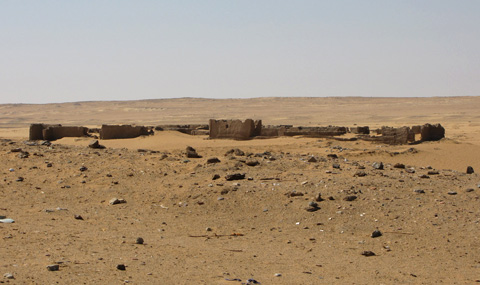
Tchonemyris was obviously of great importance as a major water source in antiquity and would have been a place where travellers would stop to rest or spend the night. A major desert route ran from the town of Esna to Qasr el-Zayyan during Roman times. On the road from Dush to the fortress and on to Qasr el-Ghueita about 7km to the north, ancient travellers would have encountered numerous wells and farming communities, many of which still remain today.

The land surrounding the fortress constitutes the lowest part of the Kharga depression at 18m below sea level. Though the fortress sits on a slight rise, this is one of the few Kharga fortresses not situated on high ground with a good view of the surrounding countryside. Perhaps Qasr el-Zayyan took more of an agricultural role than a defensive one because of the availability of water in this part of the Oasis. The community here must have been quite large and prosperous. It is also on the low ground that the cemeteries of the ancient community are to be found.
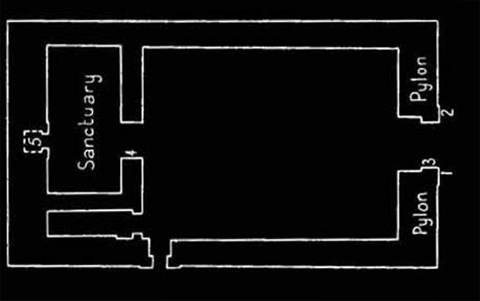
The rectangular mudbrick enclosure walls of the fortress measure 26m by 28m and are still well preserved. Inside the fortress enclosure were the living quarters of the Roman garrison and modern clearance by the Supreme Council of Antiquities have uncovered rooms containing kilns and hearths, a water cistern and a cache of Roman coins as well as bronzes and glass objects. The remains of the Great Well, covered by a domed mudbrick roof, can still be seen close to the enclosure wall on the western side.
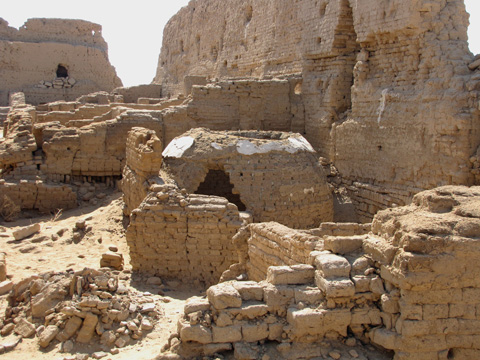
Within the fortress walls there is a temple dedicated to the god ‘Amun of Hibis’, who was known to the Romans as Amenibis and other deities of Hibis are also mentioned. This small sandstone temple measured only about 7.5m by 13.5m when it was first constructed during the Ptolemaic Period, but was renewed during the Roman rule of Antoninus Pius (AD138-161) and a brick hall, 22m long, was constructed in front of the main structure.
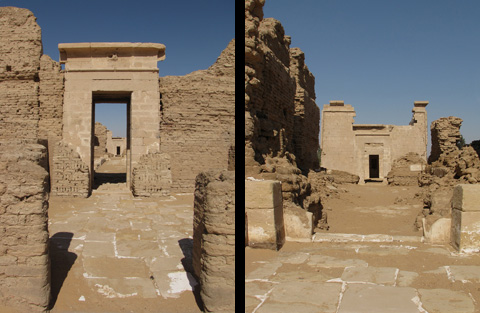
The temple is entered through a sandstone gate in the southern side of the enclosure wall which depicts a dedicatory inscription in Greek: “To Amenibis the great god of Tchonemyris and to the other gods of the temple, for the eternal preservation of Antoninus Caesar, our Lord and his whole house . . . the temple and vestibule were restored by the prefect Avidius Heliodorus, Governor of Egypt”. The inscription also names Commander-in-Chief of the troops, Septimus Macro and Plinius Capito, General of the Forces. The dedication is dated 11 August AD140, in the third year of the Emperor Caesar Titus Aelius Adrianus Antonius Augustus, the Pius.

The main temple building comprises a court leading to the sanctuary or offering chamber which has an elaborate cult-niche in the rear (north) wall. In the antechamber there is a staircase leading to the roof from where much of the temple can be seen.
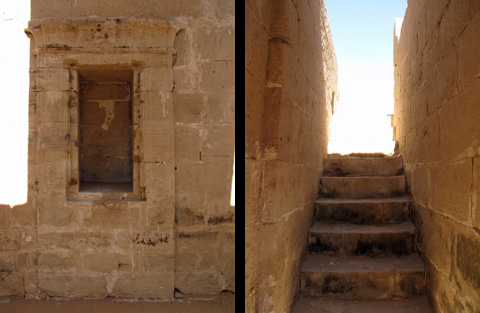
The site was visited during the latter part of the 19th century by the German geographer, Georg Schweinfurth, who found pottery, coins, glass and cast bronzes within the enclosure. Modern restoration of the temple was undertaken in 1984-1986 by the Egyptian Antiquities Organisation and more recent extensive excavation and reconstruction by the Supreme Council of Antiquities.
How to get there
Qasr el-Zayyan lies about 30km to the south of the city of el-Kharga and not far from the fortress of Qasr el-Ghueita. It can be easily reached by road and a 4×4 vehicle is not necessary. Tickets for the temple cost EGP 25.
